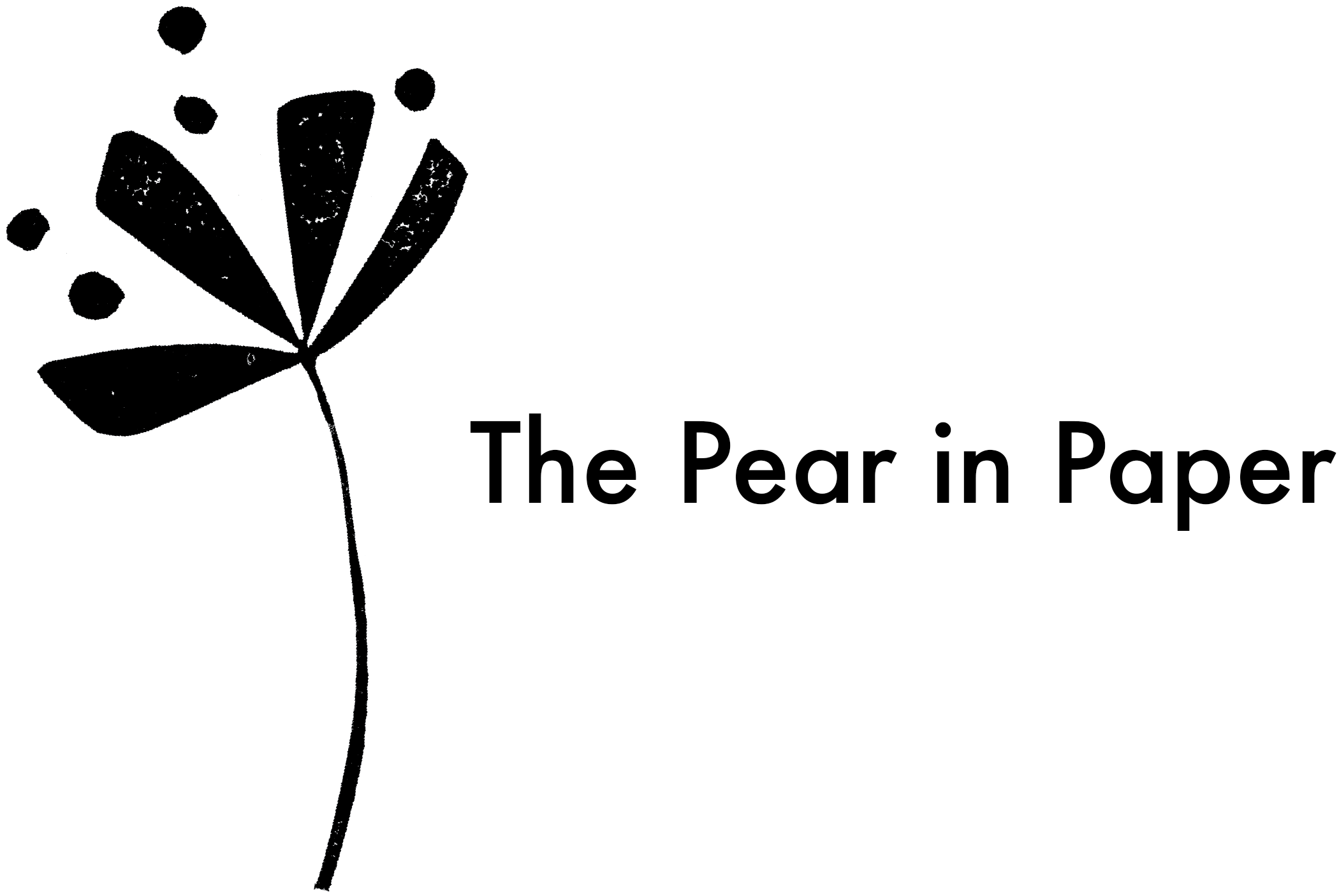Traditional Hand Crafted Eco-Friendly Goods
The Pear in Paper letterpress & linoprint studio is based at
Donegal Craft Village just outside Donegal Town on the beautiful
North West coast of Ireland.
The Pear in Paper was established in 2015 by Lynn Costello Erskine. With a background in Environmental Management and a passion for design and making, Lynn set out to produce eco-friendly products from her studio in Donegal, Ireland.
Traditional printing for The Pear in Paper translates to Letterpress and Linoprint, a deliberate move towards individually hand-crafted, tactile products printed the old fashioned way. Slow, deliberate and thoughtful.
Customers appreciate the skill involved and time taken to create the greeting cards, prints and paper clay pots in this way. The combination of modern design, traditional techniques and doing this work with the environment in mind is central of everything that we at The Pear in Paper stand for.
Letterpress
This form of relief printing was revolutionary. The invention of the mechanical movable-type printing press by Johannes Gutenberg in the mid 15th century created the ability to duplicate pages of text and images. Through letterpress, the printed word quickly travelled the world. Previous to letterpress, books were created in a painstaking, manual and slow process were scribes wrote each character by hand.
As the name itself suggests, the printed work is created by means of ink being rolled over metal or wood type and then pressed against the card or paper. That pressing action creates a depression in the card, this is instantly recognisable as the look and feel of letterpress. In Ireland, many towns and villages had at least one printshop and letterpress was a common printing technique used right up to the 1970’s. While other forms of print took over within the print industry, letterpress is recognised by all as special. We are so proud to work these big, beautiful machines and in doing so, keep a skillset alive and well.
The Pear in Paper has restored two letterpress printers to date. The first is Florrie, a treadle based platen while the second printer is Rex, a flatbed proofing press built in Germany in 1956.
Linoprint
Each of our linoprints are different, the application of the ink, the weight or rubbing of the paper and the drying process means no two linoprints will be exactly the same.
Creating a linocut print involves a number of stages and precision is key in each step.
Firstly, Lynn sketches an image on sketching paper and will work on this until she is happy with the image.
Secondly, the sketching paper is used to transfer the image to a sheet of linoleum.
The third step in the process involves the use of gouging tools to remove areas of lino, what remains is the relief itself that will be used to create the image.
Once Lynn is happy with the relief, the fourth step is to roll ink over the lino sheet, the only areas to pick up ink should be the relief itself.
The fifth step is were a page or card is carefully placed down on the lino sheet and is then pressed by hand for several minutes.
The paper is then slowly lifted, revealing the print on the paper.
The final and sixth step is to wait and let the print dry completely.
Lynn will typically dry a linoprint overnight on a ceiling drying rack in the studio.
Papier-Mâché Pots
Uathúil (meaning unique in the Irish language) is a series of recycled papier-mâché pots made in the studio.
These recycled paper clay pots are the result of a yearlong project that has allowed Lynn to re-use every piece of card in her workshop in order to cut down on as much waste as possible.
The process of handcrafting each recycled paper pot takes two weeks from start to finish, a labour of love!
During the make-ready stage of letterpress printing, card is used several times over to test alignment and colour before a final print run begins. These colourful test cards have always been stored. When a stack of these test cards build up, they are torn up and so begins the enjoyable process of recycling this card into paper pots.
There are several experimental paper creations in the pipe line!
Punch Needle
This technique has a rich history. It began in the United States in the 1800’s and quickly became very popular. By the 1920’s Rug Hooking studios had opened all over the United States and into Europe where their products were highly sought after. By the 1950’s this beautiful slow craft became just that, too slow for our fast paced world and became a dying art (similar to other slow crafts - letterpress, linoprint and papier-mâché) This craft was initially used to make rugs but it has evolved over the years and can be used for all kinds of art projects.
Lynn’s interest in punch needling is due to her grandmother who made several beautiful pieces in years gone by.. A large metal needle threaded with Donegal yarn is pushed through the organic cotton fabric, a loop is created on one side and an embroidery stitch is created on the other side. Lynn works both sides of the fabric, this is how different textures are created on the fabric.
Lynn has introduced a range of limited edition punch needle cushions that uses the traditional technique of Punch Needle Rug Hooking
The fabrics are 100% organic cotton or linen while the wool is 100% pure wool sourced in Donegal.





